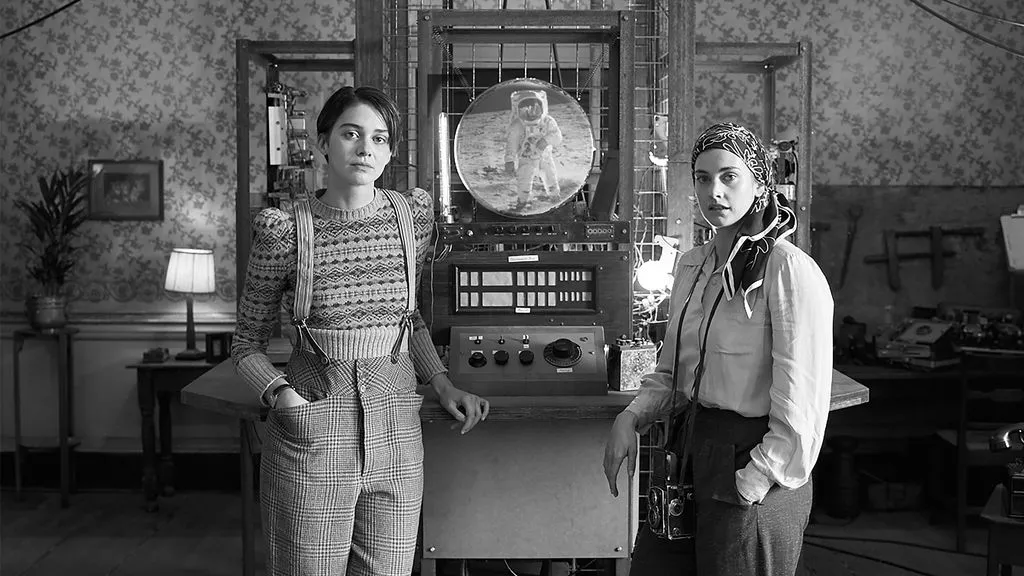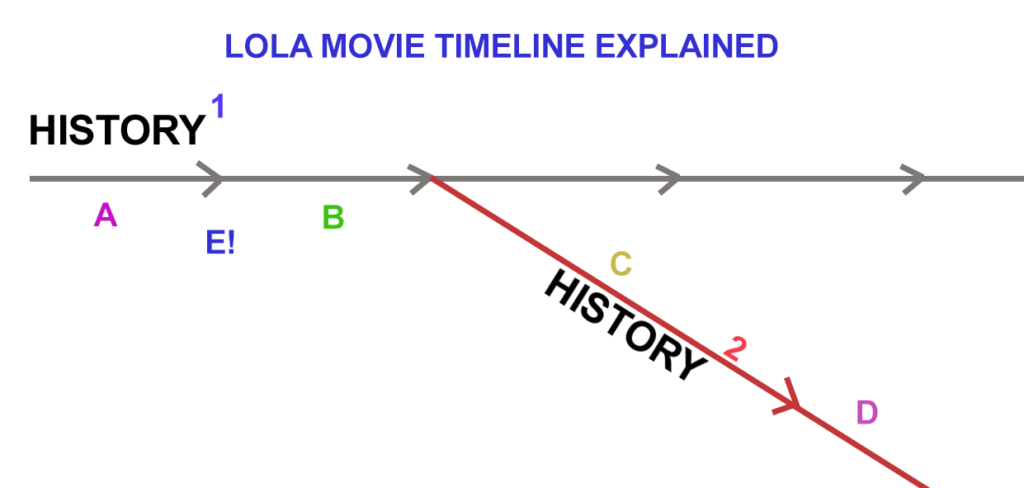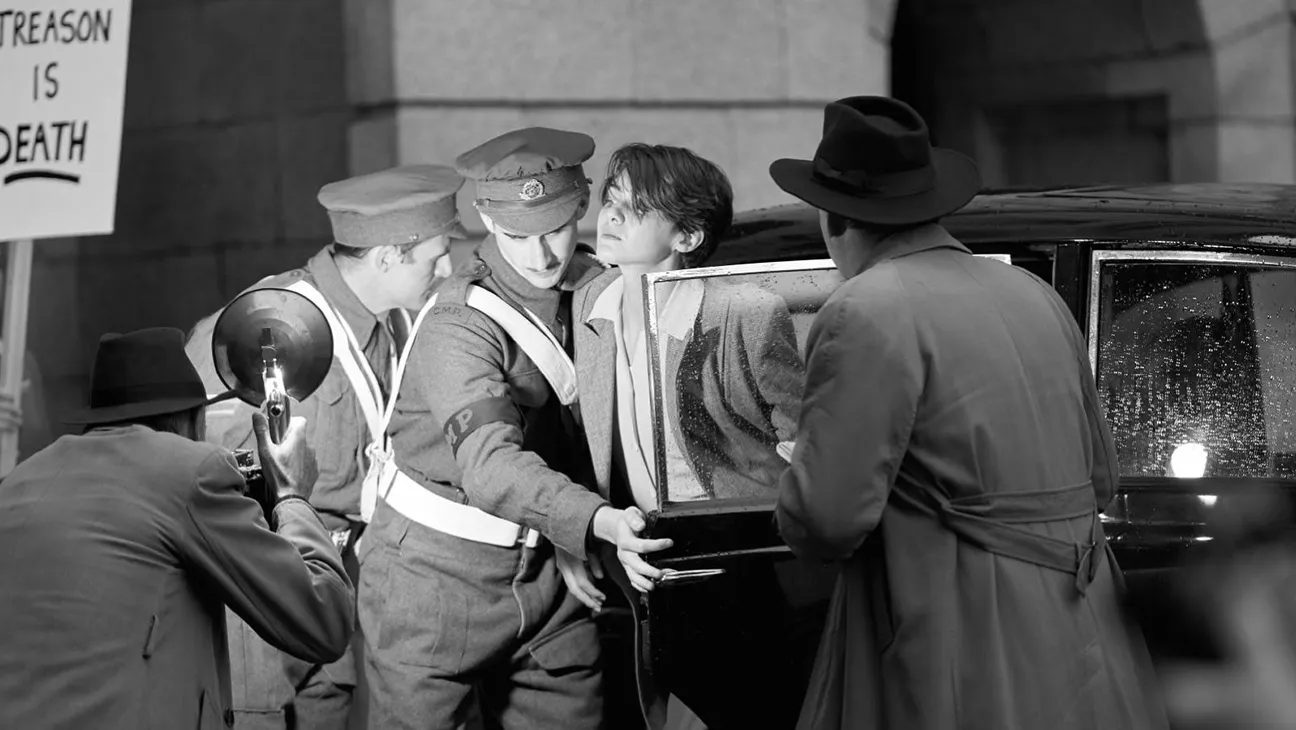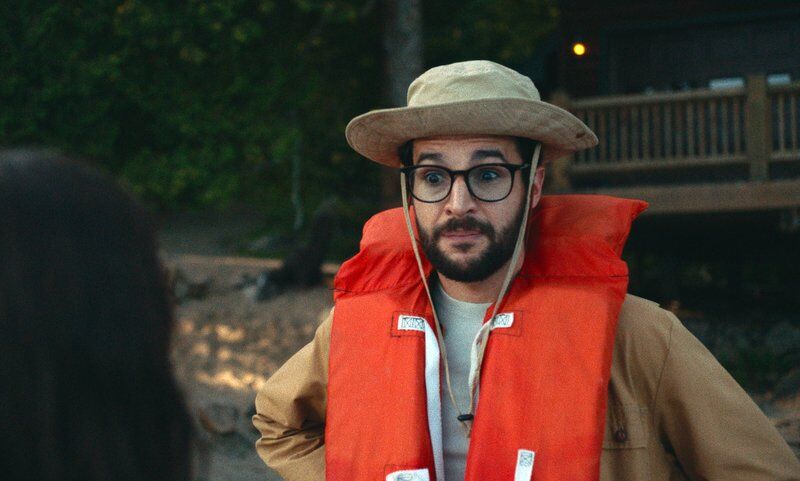Movie Lola Got You Stumped Let Us Explain the Time Travel for You! Here at THiNC. we just love crazy complicated mindjob movies that make you think, and Lola will not let you down in that regard.
Be careful… because from here on out? SPOILERS EVERYWHERE!!!
Movie Lola Got You Stumped Let Us Explain the Time Travel for You!
In the movie “Lola,” the machine named Lola is a unique contraption created by the brilliant Thomasina. Unlike traditional time machines that physically transport people through time, Lola operates in a rather distinct and innovative manner. The machine acts like a transmitter and receiver of future broadcasts. Lola taps into the vast reservoir of future information, capturing broadcasts, telecasts, and transmissions that are yet to occur. These transmissions encompass a variety of content, including news updates, musical performances, cinematic releases, and more.
When activated, Lola essentially pulls in these future broadcasts and displays them to its users, effectively providing a window into events and culture that are still on the horizon. This allows those who interact with Lola to witness future developments, experience artistic creations that haven’t been made yet, and even anticipate significant historical occurrences before they happen. My favorite bit is the way the duo fell in love with David Bowie! So great. And then later, when they accidentally destroy his ever having existed, they at first mourn his disappearance, and then they begin to realize how dangerous this new tool really might be.
The Dangers of Lola – Are They Dangers?
Quick rabbit trail here. Think about this for a second. You have a machine that shows the future, and you fall in love with a future artist. Banksy let’s say. Or Bowie, let’s just stick with Bowie, and your machine takes a turn and murders the guy and all his amazing tunes. Right? He never existed. So… is that bad? Sure, you are aware of his music (or his art) and now it won’t occur. But, maybe Bowie2 will occur… or Banksy Squared? But what we are experiencing as an audience is a sort of detachment disorder, right? It’s like a dissociative thing that is occurring. We feel like we can’t relate, and we are losing the thread, as things become more and more foreign to us. The hero here? Is our historical timeline… the one that we know. It’s an interesting storytelling plot device. GO LEGITIMATE HISTORY GO! So keep that in mind as we continue. The story isn’t specifically watching a character arc, but rather the hope for salvaging our past and our future.

Let’s Continue Shall We?
The film itself is critical to the story telling itself. Many hate found footage films, but the “findingness” of this particular film is INTRINSIC to the story and the denouement over all. So, before you hate on the film, and its “foundness” realize that it’s critical to the movie’s ending. That not withstanding… Martha begins to address her sister, Thomasina, through her film about their experiences. Back in the 40’s, we watch as Lola is revealed, and the impact that their discoveries have on World War II and our understood history. I think we should either call our real history, History-Prime or History1, yeah, History1, I like that.
So, as we stated already, Thomasina (the genius of the two) and her sister Martha begin experiencing the best of art, music and historical events that the future has to offer. But then, when they start seeing future World War II events they realize that they can use it to help the Brits overcome the Germans. The two women become firmly ensconced in the British military higher ups and have been given the code name Angel.Only problem? One day, in order to not give the game up, they allow an American ship with 2,000 souls on board get torpedoed. Well, the Americans are not a fan. Not at all. And as a result, the Americans refuse to join the war. Yeah, that would be our 2nd encounter with a changed timeline. We’ll call this pivot of the Americans out of the war: History3. And yeah, History3 is really bad.
An officer in the British military, Sebastian connects with the women over time and begins to utilize the full potential of Lola’s predictive military capabilities in spite of the loss of the Americans. The further down the rabbit hole they go though, the more that Martha begins to notice more and more of these unintended changes in the future. Continuing to shoot her documentary, she makes particular note of the jarring nature of these timeline hops.
Britain, in a fit of power lust, dives deeper and deeper into the belly of the Lola beast. But the deeper they go, the more chaos that happens. And soon after, the sisters are framed as German spies and collaborators. And as a result, Lola is seized by the British government which is becoming more and more a fascist state.
Martha, her documentary of their downward spiral complete somewhere around History896, is then witnessed by Martha2, back on the timeline of History1, and she realizes the downward spiral the machine is about to take them on. And, as a result, Thomasina refrains from further developing or utilizing Lola… which then preserves the original History1 timeline. And as the movie ends, we watch as the two women celebrate the ending of World War II.
Wait. WHAT? Explain the Ending of Lola One More Time?!?

The cleverness of Lola is in its brilliant repressiveness. Martha was… Oh, screw it. I’m going to create a diagram. Everyone loves a diagram. The horizontal line is History1, OK? Our known and understood History… with Hitler, WW2 and our eventual victory with USA participating. History2 goes off at an angle, and doesn’t include USA participating in WW2. So, in this diagram…
A. Martha and Thomasina invent a viewer that can listen to future broadcasts.
B. They begin advising the British military on where the German’s will be, and the Americans refuse to join the war – and they head down History2.
C. Martha has been videoing their work and detailing the changes they are inadvertently making to the future history.
D. There is no hope for Martha1 and Thomasina1 but their documentation of their chaos is complete.
E. Back in History1, because they documented it, it means Martha would have seen their future changes. As a result, Martha and Thomasina do not utilize Lola in changing the war. Therefore, they watch as America Joins the war, and World War II ends with Germany’s surrender.
Does that make more sense?
How the Machine “CHANGES” Time
To overly belabor the point – because people are still confused, let’s speak very clearly on this point. In the movie “Lola,” the concept of the self-shot documentary isn’t about physically sending the film back in time in order to communicate the risks. Instead, it’s about Martha sharing her experiences, insights, and regrets with the intention of influencing her younger sister, Thomasina, to make different choices regarding the development and use of the Lola machine. Once the film is created, her younger self will see it when she looks at her own future.
By witnessing her own “screw ups” and seeing how they lead to a timeline where even significant historical events like the end of World War II are drastically altered, Martha comes to the realization that it’s best to prevent the development of the Lola machine in the first place. She hopes that her message will reach her younger self (Thomasina) in a different timeline, prompting Thomasina to abandon the idea of creating Lola and thus avoiding the entire chain of events that caused the altered timeline.
In this way, the self-shot documentary becomes a kind of cautionary tale that transcends time, aiming to guide Thomasina toward a different set of choices that will ultimately maintain the integrity of the original timeline. It’s a creative narrative device that uses the idea of reflection, communication, and influencing decisions to explore the complexities of time travel and its consequences.
Thoughts on the Movie Lola
I really enjoyed this movie and the insights that come from considering if we had the ability to change time. It’s an interesting conundrum. Who do you save, who do we leave behind? Just the other day THiNC. recommended a movie entitled Aporia that deals with a similar timeline conundrum. (Highly recommend it by the way.) For a low budget movie, I give high praise to the film editors, and special effects for integrating real footage in such a clever way.
So, yeah! Lola was my jam!! I absolutely loved it and I’m really hoping to get a chance to interview the folks that made this beaut of a film.
Dying to Watch More Movies like Lola???
Aporia and Time Lapse are the two best movies that leap to mind when thinking about machines that can see into the future.
Edited by: CY


